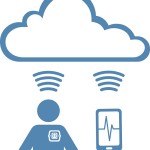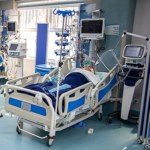In the past few years, the use of telemedicine has skyrocketed and the healthcare industry has seen continued growth and adoption of connected medical devices. Yet, we still have a long way to go in delivering truly connected care in a home-to-hospital continuum.
We spoke with Stuart Long, CEO of InfoBionic, about the latest innovations in connected cardiac devices and what it will take to realize the promise of remote patient monitoring as an extension of in-facility care.
Prior to joining InfoBionic as CEO, Long served as CEO at Monarch Medical Systems, a Charlotte-based AI software provider for insulin-dosing calculations, global chief marketing and sales officer for medical device integration and clinical data management provider CapsuleTech and held leadership positions at Philips Healthcare, Agfa HealthCare, AMICAS, FUJIFILM USA and Eastman Kodak.
How can innovations in medical technology address the different levels of clinical complexity, as healthcare organizations integrate more connected devices and virtual care?
Long: Clinical complexity can come in many forms, whether that’s the increasing complexity of a patient’s condition, the various forms of technology that can or must be deployed to enable virtual care, or trying to manage many silos of information that can extend from the hospital to a long-term care facility all the way to the home and in and out of multiple physician offices. These were the largest impediments to virtual care or telemedicine for decades.
Yet the pandemic changed all that. Care still being required in the face of little to no in person contact forced not just the industry but the government and payers to work to allow for an easier way to deploy valid technology to overcome the immediate challenge of maintaining care for patients in their homes or other care facilities beyond the traditional brick and mortar of hospitals and physician offices.
What are some of the unique challenges in cardiac care?
Long: Within the hospital, you have varying degrees of care. In patient cardiac monitoring, it’s typically broken into three tiers of devices. High Acuity, including the ICU & CCU, requires the most sophisticated continuous ECG telemetry. A monitoring desk in the ICU is staffed for 24/7 monitoring of the patients in real-time. Mid Acuity is the step-down units where continuous ECG telemetry is also used for real-time monitoring, but with a lesser degree of sophistication, yet still includes basic vital signs. In Low Acuity (the standard medical-surgical floor), there is typically no telemetry, yet periodic vital signs are taken by mobile vital signs monitors.
To ensure that all levels of acuity can be monitored in a virtual care environment, you ideally want a continuous virtual telemetry platform that has a variety of monitoring capabilities based on the patient’s condition. The latest innovations are modular Bluetooth lead set systems where facilities can prescribe the appropriate level of cardiac monitoring. In addition to this, we can now initiate monitoring in the hospital before the patient goes home, and they can seamlessly transition on the same device from the hospital to the home.
How should hospitals and providers work with MedTech companies to increase capacity for and adoption of virtual care?
Long: With the regulation and the validation by CMS to initiate and move forward with virtual care programs, such as the Hospital at Home program, we’re already seeing health system lean into these programs.
Needs changed quickly during the pandemic, and it caught the market at its very infancy of being able to adapt. I can only imagine what this will look like 10 years from now. Much like the hospital IT and departmental systems of the late ’80s and early ’90s evolved from paper to the now robust and very maturely integrated system of systems, so too will we see the early ‘digital’ efforts evolve.
Today it is the wild west of systems. Hundreds of companies are brining innovative solutions to the market. We’ll continue to see a variety of ‘best of breed’ solutions coming to market with new and improved ways to capture, communicate and drive better outcomes. This will, in turn, drive market consolidation, just as we saw in the early electronification of hospitals. We’ll definitely see a continued push for hospital to home transition unification as well as the broadly accepted CMS Hospital at Home programs flourish.
Hospitals and providers should look for solutions that provide a broad range of expertise and quality and don’t specifically focus on one end of any care spectrum. They will want to look at solutions that can homogenize a technical deployment as much as possible. As for quality, regulatory approvals are essential as well as high degrees of security compliance.
How can healthcare organizations and MedTech companies work together to maximize resources to better manage patients, especially in the area of remote monitoring?
Long: The simple answer boils down to communication. Healthcare organizations can’t do this on their own. They need the MedTech companies to enable it. Yet at the same time, the MedTech companies can’t do it without the healthcare organization. Being we’re still in the ‘system of systems’ and there is no one vendor that can do it all, healthcare providers must choose their partners wisely keeping not just cost but clinical quality at the forefront of the planning and implementation.







